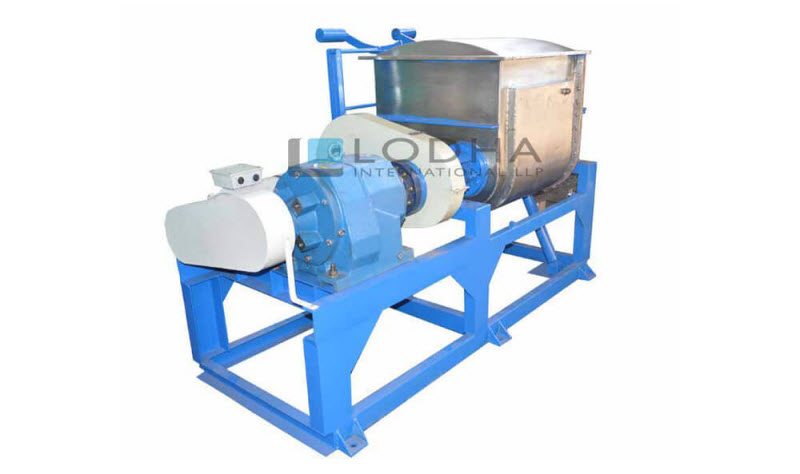Get in touch! +91 9687731331 | +91 9687631331 | info@lodhapharma.com
Getting the Most Out of Your Sigma Mixer
Getting the most out of your Sigma Mixer can be easy when you know what to look for. Some of the things you should know include applications and the drive and hydraulic systems. Also, look for overlapping blade action and how it can help with heavier viscosity materials.
What is Overlapping Blade Action in Sigma Mixer?
Unlike the tangential blade action, the overlap blade action on a Sigma Mixer involves a pair of blades that rotate at the same speed. This produces a lower shearing action. The overlapping strategy allows for faster material interchange. However, the positioning of the blades must remain unchanged. It also depends on the rotation speed of the blades.
Overlapped blade action on a Sigma Mixer allows for a wider range of material interchange. It also promotes lateral motion. This can be beneficial for products that have a tendency to flow freely in a mixer. It also allows for the rapid cooling of materials. However, if the material is at an unsafe temperature, mixing may not be permitted.
The overlapping strategy is not ideal for all applications. It is best used for products that are lighter in viscosity. It is also less common than vertical planetary mixers.
What are the Benefits of Hydraulic system in Sigma Mixer?
Various industries use Sigma Mixer to produce various kinds of chemical products. The mixing chamber is equipped with blades that rotate with different speeds. The blades can be operated manually. They can also be lifted hydraulically. This machine can be used for mixing, kneading and extruding. Various materials such as plastics, pigments, dyes and architectural coatings can be processed using this machine.
This machine is manufactured from mild steel and stainless steel. It is especially designed for mixing high viscosity materials such as plastics, inks, dyes and pigments. It can also be used to process rubbery, viscous plastic materials. It is mainly composed of five parts. The parts are a kneader, a double arm mixer, a hydraulic system, an electric control system, and a frame.
Sigma Mixers can also be equipped with an extruder to form or knead the material. The extruder can be placed between two trough compartments. This allows for precise discharge of the mixed product.
Sigma Mixers can be equipped with a bottom discharge valve. This allows discharge of the material through two valves. The material is typically loaded into the mixing container at around forty to sixty percent of the mixer's total volumetric capacity.

Sigma Mixers are Suitable for Heavier Viscosity Materials
Among the various types of mixers available in the market, the Sigma Mixer is highly regarded for mixing highly viscous materials. It can be used in a variety of applications and is suitable for a variety of products, including chewing gum, slurry, and heavy paste-type products. This machine is also capable of producing a variety of other chemicals, including soap and detergent.
Sigma Mixers are modern, heavy-duty mixers. They achieve thorough and uniform mixing through the combination of recombining, stretching, and shearing. They are made of mild steel, carbon steel, or stainless steel. They are also fitted with jackets for heating and cooling. They are used in various industries, including food and chemical processing.
Sigma Mixers are manufactured with a jacketed shell that can be heated by steam or water. They are also designed with fiber glass insulation over the shell.
What are the Applications of Sigma Mixers?
Designed for mixing highly viscous materials, sigma mixers are widely used in various industries. Sigma Mixer applications include granulation of pasty and sticky products, dispersion of heavy plastic masses, and homogenization of solid-liquid mixtures. This type of mixer is also used to combine various types of chemicals and food products.
Sigma mixers are designed to promote lateral motion of material, which prevents loss of volatile solvent during mixing operations. The blades are made of stainless steel, mild steel, or plastic. They are usually fitted horizontally in each trough of a bowl. They are used for wet granulation, solid-liquid mixing, and hot-melts.
Sigma mixers are used in various industrial applications such as hot-melts, inks, syrups, food products, and chewing gum. They are also used for kneading of sticky products.
In Conclusion
Sigma Mixers are available in several different designs. The most common is a double arm mixer. They are generally Sigma-shaped, but can also be designed to match the heating requirements of the material.
Typical Sigma mixer applications are in the production of PVC coatings, ceramics, printing inks, soaps, pharmaceuticals, and other high-viscosity materials. They can handle materials with over 500,000 cps.

